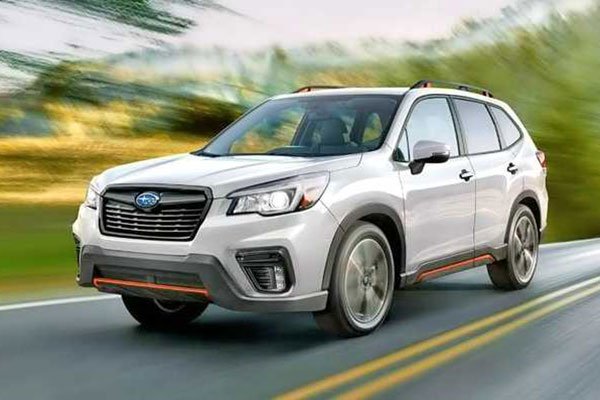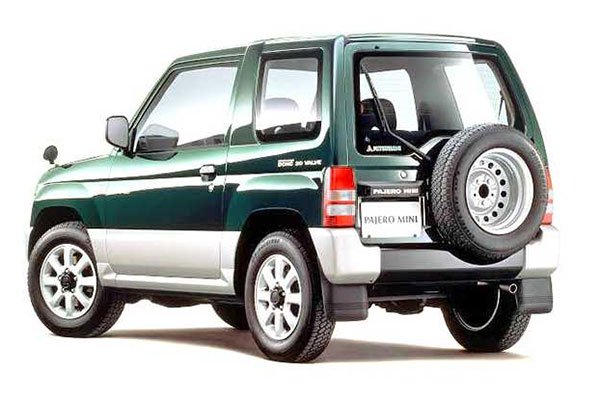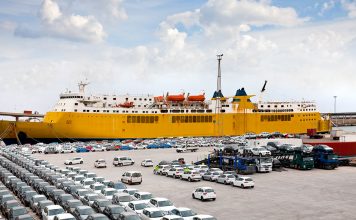Hi Baraza,
Thank you for the good work. The humour and the artistic way in which you solve our car problems has never waned. You never disappoint us. Now, I have only one concern about cars. Why are makers of the Volkswagen, Subaru and Mercedes not making hybrid cars like the Toyota Prius and Honda Fit shuttle that use rechargeable batteries. Could it be that the technology is not dependable?
Barack
Hi Barack,
Well, are you sure none of these other automakers are making hybrids? Volkswagen has sold a hybrid Touareg for a while now, the previous generation. The company has vowed to go fully electric going forward, but they also sell plug-in hybrids of the Golf and the Passat in GTE trim currently. Mercedes makes what they call mild hybrids and Subaru is, well, Subaru.
Subaru has always been a leftist kind of entity, doing strange and unusual things such as using flat engines, hooking the parking brake to the front wheels, having the spare in the bonnet, sporting frameless doors in saloon cars and wagons and making cars that are low on aesthetics but high on talent, so when it comes to emissions stuff, rather than initiate a noisy and PR-heavy hybrid programme, they prefer to tell it like it is. Most car companies have a part of their websites dedicated to confessing that cars are a major contributor to climate change, so in light of that, we will plant trees and build low-emission hybrid cars, so you can see that we care, yadda yadda… Not Subaru.
Bold and ballsy manoeuvre
Subaru takes an interesting angle in that they too admit that climate change is real and there will be floods and storms and bad weather so this means exactly one thing: you will need the all-wheel drive dependability that we currently offer in our cars to be able to drive in these neo-apocalyptic conditions. Seriously, check out their website – or not, since this was spotted earlier this year and Subaru said they would not use climate change as a sales opportunity, so they have probably taken down that controversial entry; but if you are the type of internet geek who knows how to access archived pages, you can still find this bold and ballsy manoeuvre preserved somewhere online.
What Subaru wants you to look at instead is their page called Subaru Loves the Earth where they talk about their zero-waste factories and PZEVs - Particle Zero Emissions Vehicles, which are not really hybrids; they’re just cars powered by regular old internal combustion. However, you can get a 2020 Forester hybrid or a 2020 Crosstrek/XV hybrid, so yes, Subaru does hybrids as well. It would be insane and a public relations fail not to have a hybrid in your line-up in this day and age.

Forester Hybrid. PHOTO | COURTESY
Hybrid tech is not only dependable, but also easily adaptable; so easy in fact that the infamous ex-BBC Top Gear trio of Clarkson, Hammond and May built one out of stuff that might have been swept off a hardware store’s floor, and it worked, with hilariously doctored effect, but it worked. That three TV presenters can conjure up a hybrid in a shed means that car manufacturers should not struggle too much adding electric motors and batteries to engines that run on the remains of our ancestors.
That being said… hybrid powertrains are more of a stop-gap measure in the march towards a fully electric future than an outright alternative to fossil-based internal combustion; which is why some manufacturers may opt to skip that step and dive right headfirst straight into the sea of electrons. Porsche appears to have done this with the Taycan. I know there is a Cayenne hybrid but come on, how long was that tank in existence before the Taycan made an appearance? Also, there isn’t a hybrid 911, yet the model is the raison d’être of Porsche AG (there might be a hybrid 911 in the foreseeable future, though; some things are inevitable). The 918 Spyder was a one-off so it doesn’t count. Irrespective of where the electricity will come from – whether a three-pin mains outlet on the wall, or from a hydrogen fuel cell, or a nuclear reactor, or even a solar panel – the car of the future will run on it.
Electric plane
More proof that the future is electric? Someone just took flight on an electric plane. Granted, it’s an itsy-bitsy DHC-2 de Havilland Beaver seaplane and it has a piffling range of only 100 miles (160km), but it speaks volumes when the airline industry also starts eyeing electricity as a means of propulsion.
Every day, we read about automakers partnering with both automotive and nonautomotive firms to dump billions of dollars into the development of EVs and battery technology. And not only firms and companies, geopolitical trading blocs too. The European Union just last week channelled 3 billion euros (billion with a “b”; euros, not Kenya shillings) to assist in battery development, while expecting another 5 billion euro in private investment.
The future is here
I recently had a debate with a non-enthusiast over the future of motor vehicle propulsion and they claimed it will be a while before we go full EV, but with this kind of spending by governments and the private sector; along with Elon Musk’s iconoclastic shenanigans, I daresay the future is here. Keep in mind that China, the world’s largest market for cars, is also EV-centric, though this is partly under duress and heavy subsidisation from the government, but we can overlook that. China is responsible for half of electric vehicle sales worldwide, which is a critical factor in the global automotive industry. Global EV sales went up by 13 per cent over a year earlier in the 10 months through October at 1.7 million, according to Bernstein Research. North American sales stood at 301,000 while Europe did 395,000. These are not trivial figures; but just to show how serious a player China is, the country.
“…did 1.2 million electric or gasoline-electric hybrid models over the past year. Most of these wound up in government and company fleets, according to Bernstein. Almost 500,000 bought by consumers were in cities that offer incentives such as being exempt from registration fees or licence plate waiting lists….”(source: jalopnik.com)
Electric car sales in China are predicted to resurge next year. For the first nine months of 2020, sales of 912,000 electric vehicles, a 13 per cent increase from the year-earlier period is predicted by BloombergNEF Research.
The Prius may have started this hybrid craze but it is currently being massively outsold by the RAV4 and Corolla hybrids, implying that hybrids didn’t have to be boring, anodyne, tasteless blobs in the first place, but as any holder of a business degree will tell you, market dynamics are best summarised as the laws of supply and demand, and with demand being so high, supply is running low. Toyota doesn’t have enough batteries for the RAV4 hybrid. So guess what? The next quick thinker is going to work to plug this gap, and this may be Elon Musk with his Tesla test bed. Toyota, who somehow still believes in hydrogen, introduced its first real mass-market battery-powered vehicle in the form of a Lexus, called the UX 300e. This should be a clear enough indicator that the future is electric.
Extreme example
In a more extreme example, car makers are actually downsizing their workforces to channel that funding towards even more investment in electric cars. Around 80,000 jobs between Germany, the US and the UK will vaporise over the next decade as “a fundamental structural change with enormously high investments at a time of deteriorating market dynamics” takes place, according to a guy called Mattes. As electric drivetrains become cheaper, competition will intensify and emissions standards will tighten, meaning the demand for cars that require fewer people to build will shoot up. What more proof do you need that the future is here?
You shouldn’t have replaced your crankshaft
Hello Baraza,
I own a Mitshubish Pajero mini and I like the car. It practically suits all my needs. Economical, high, space efficient etc.
I was really hoping you could assist me with my recent issue on it. I took it for servicing a week ago after which the car has been having problems when I start it. I have to start the car about three or four times before the engine can start. An analysis was done and found the crankshaft has a problem, it was changed but still the problem persists.
Could you give me an insight on what the problem could be?
I am not very conversant with the car’s engine system.
But let me know what you would advise.
Thank you
Olivia

Mitshubish Pajero mini. PHOTO | COURTESY
Hi Olivia,
The mechs who handled your car may not be very good at diagnostics. The problem may not be the crankshaft itself, but the crankshaft position sensor, which is a much smaller and cheaper object that is easier to replace than an entire crankshaft. One of the symptoms of a failing crankshaft position sensor is a hard start, which you describe as “starting the car about 3 or 4 times before the engine can start”. Someone must have fiddled with the sensor during servicing.
So the bad news is you may have bought another crankshaft for nothing. The good news is, if it is the CPS failing, replacement is a quick task.
My ‘check engine’ light refuses to go off
Hi Baraza,
My name is Simon. My Mazda Demio’s “check engine” light refuses to go off and I’m wondering what the issue could be. The diagnosis showed that the problem emanates from oxygen sensors but even after replacing them, the problem persisted. The light has no impact on performance or fuel consumption but it still bothers me. Could the car’s tracking system have something to do with it?
Hello Simon,
It’s unlikely that a Check Engine error code pointing to the oxygen sensors could be linked to the car tracking system.
This is where we pause all proceedings and analyse syntax and semantics. Your email had a grammatical error (it said “problems i oxygen sensors”) which means it doesn’t clarify whether the problem is with the oxygen sensors or at the oxygen sensors.
There is a difference. If the O2 sensors were the problem, then replacing them should have cleared the light. Usually the light is cleared using an ECU reflash, or via 50 start cycles. An alternative is to disconnect the battery overnight to perform the reflash, then the light disappears. However, if the O2 sensors were not the problem, but were detecting a problem, then replacing them won’t change anything since that is not where the issue is. Think of it this way: if your car is broken into, this is a security issue, not a car issue. Changing cars will not prevent the replacement from being broken into again. You have to upgrade your security.

Mazda Demio. PHOTO | COURTESY
So if the sensors are picking up a problem it could be one of the following two categories:
1. The vehicle is running lean, which could be occasioned by: -
- an exhaust leak upstream of the 02 sensor
- a vacuum leak downstream of the MAF sensor - could be loose intake gaskets or tubes, or broken vacuum lines
- restricted fuel flow from a clogged filter, blocked fuel lines or weak fuel pump
- engine misfiring
- incorrect data from other sensors such as the aforementioned MAF
2. The vehicle is running rich, which could be occasioned by: -
- Faulty injectors: either they are leaking or there is a grounding short in their circuitry
- Faulty fuel pressure regulator
- Faulty emissions control system
The idea behind an 02 sensor is to determine the kind of air-fuel ratios (AFRs) that the engine is running, which is where the two scenarios arise from: in either one, the engine is not avoiding stoichiometric AFRs of its own volition, which means there is a problem. Needless to say, the lists above are not comprehensive, you may need to troubleshoot other areas but start with these ones first.
All the best narrowing down your search.
SOURCE: nation.co.ke







![Top 20 Used Cars to Avoid Buying in Kenya – [PHOTOS]](../../../blog/wp-content/uploads/2013/11/top-used-unreliable-cars-to-avoid2-80x60.jpg)


![Here are some of the best tuned cars in kenya by state of the art garages [PHOTOS]](../../../blog/wp-content/uploads/2013/11/29402_10151301757042065_340470732_n-e1384498044289.jpg)

![Top 20 Used Cars to Avoid Buying in Kenya – [PHOTOS]](../../../blog/wp-content/uploads/2013/11/top-used-unreliable-cars-to-avoid2-100x70.jpg)





